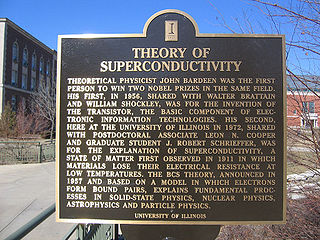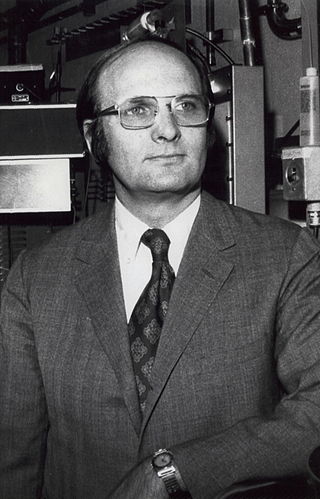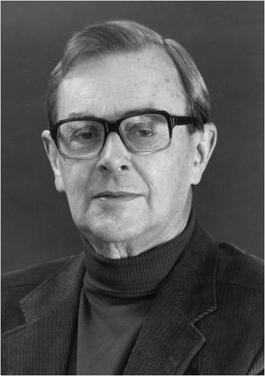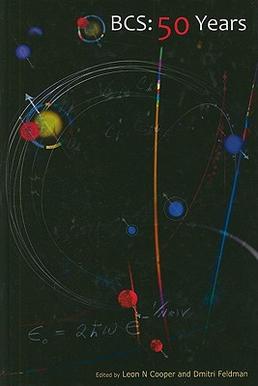
In physics, theBardeen–Cooper–Schrieffer (BCS) theory is the first microscopic theory of superconductivity since Heike Kamerlingh Onnes's 1911 discovery. The theory describes superconductivity as a microscopic effect caused by a condensation of Cooper pairs. The theory is also used in nuclear physics to describe the pairing interaction between nucleons in an atomic nucleus.

John Bardeen was an American physicist and electrical engineer. He is the only person to be awarded the Nobel Prize in Physics twice: first in 1956 with William Shockley and Walter Brattain for the invention of the transistor; and again in 1972 with Leon N. Cooper and John Robert Schrieffer for a fundamental theory of conventional superconductivity known as the BCS theory.

Superconductivity is a set of physical properties observed in certain materials where electrical resistance vanishes and magnetic fields are expelled from the material. Any material exhibiting these properties is a superconductor. Unlike an ordinary metallic conductor, whose resistance decreases gradually as its temperature is lowered, even down to near absolute zero, a superconductor has a characteristic critical temperature below which the resistance drops abruptly to zero. An electric current through a loop of superconducting wire can persist indefinitely with no power source.

Steven Weinberg was an American theoretical physicist and Nobel laureate in physics for his contributions with Abdus Salam and Sheldon Glashow to the unification of the weak force and electromagnetic interaction between elementary particles.

Frank Anthony Wilczek is an American theoretical physicist, mathematician and Nobel laureate. He is the Herman Feshbach Professor of Physics at the Massachusetts Institute of Technology (MIT), Founding Director of T. D. Lee Institute and Chief Scientist at the Wilczek Quantum Center, Shanghai Jiao Tong University (SJTU), distinguished professor at Arizona State University (ASU) and full professor at Stockholm University.
In condensed matter physics, a Cooper pair or BCS pair is a pair of electrons bound together at low temperatures in a certain manner first described in 1956 by American physicist Leon Cooper.

John Robert Schrieffer was an American physicist who, with John Bardeen and Leon Cooper, was a recipient of the 1972 Nobel Prize in Physics for developing the BCS theory, the first successful quantum theory of superconductivity.

Ivar Giaever is a Norwegian-American engineer and physicist who shared the Nobel Prize in Physics in 1973 with Leo Esaki and Brian Josephson "for their discoveries regarding tunnelling phenomena in solids". Giaever's share of the prize was specifically for his "experimental discoveries regarding tunnelling phenomena in superconductors".

Jack Steinberger was a German-born American physicist noted for his work with neutrinos, the subatomic particles considered to be elementary constituents of matter. He was a recipient of the 1988 Nobel Prize in Physics, along with Leon M. Lederman and Melvin Schwartz, for the discovery of the muon neutrino. Through his career as an experimental particle physicist, he held positions at the University of California, Berkeley, Columbia University (1950–68), and the CERN (1968–86). He was also a recipient of the United States National Medal of Science in 1988, and the Matteucci Medal from the Italian Academy of Sciences in 1990.

Superconductivity is the phenomenon of certain materials exhibiting zero electrical resistance and the expulsion of magnetic fields below a characteristic temperature. The history of superconductivity began with Dutch physicist Heike Kamerlingh Onnes's discovery of superconductivity in mercury in 1911. Since then, many other superconducting materials have been discovered and the theory of superconductivity has been developed. These subjects remain active areas of study in the field of condensed matter physics.

Sir Alfred Brian Pippard, FRS, was a British physicist. He was Cavendish Professor of Physics from 1971 until 1982 and an Honorary Fellow of Clare Hall, Cambridge, of which he was the first President.

William Allan Bardeen is an American theoretical physicist who worked at the Fermi National Accelerator Laboratory. He is renowned for his foundational work on the chiral anomaly, the Yang-Mills and gravitational anomalies, the development of quantum chromodynamics and the scheme frequently used in perturbative analysis of experimentally observable processes such as deep inelastic scattering, high energy collisions and flavor changing processes.

BCS: 50 Years is a review volume on the topic of superconductivity edited by Leon Cooper, a 1972 Nobel Laureate in Physics, and Dmitri Feldman of Brown University, first published in 2010.
John Harris Miller Jr. is an American physicist with important contributions to the fields of physics, biophysics, Impedance spectroscopy, and material science, mainly known for his role in Charge density wave, research work on Cuprates and Impedance spectroscopy of living organisms. He is particularly known for an effect "Collective Quantum Tunneling of CDW Electrons" and for a well-known paper on the topic written by him and his colleagues, as published in Physical Review Letters. He was a noteworthy student of the twice Nobel laureate physicist John Bardeen who mentioned him at several places in his biography "True Genius: The Life and Science of John Bardeen".
Several hundred metals, compounds, alloys and ceramics possess the property of superconductivity at low temperatures. The SU(2) color quark matter adjoins the list of superconducting systems. Although it is a mathematical abstraction, its properties are believed to be closely related to the SU(3) color quark matter, which exists in nature when ordinary matter is compressed at supranuclear densities above ~ 0.5 1039 nucleon/cm3.

Thomas Maurice Rice, known professionally as Maurice Rice, is an Irish theoretical physicist specializing in condensed matter physics.
William P. Halperin is a Canadian-American physicist, academic, and researcher. He is the Orrington Lunt Professor of Physics at Northwestern University.
Richard Allan Ferrell (1926–2005) was an American theoretical physicist, specializing in condensed matter physics and statistical physics.
In physics, the Matthias rules refers to a historical set of empirical guidelines on how to find superconductors. These rules were authored Bernd T. Matthias who discovered hundreds of superconductors using these principles in the 1950s and 1960s. Deviations from these rules have been found since the end of the 1970s with the discovery of unconventional superconductors.














